If you ever rode an older car, you’ll notice how different the latest vehicles are today. Most of them are loaded with snazzy new features that make car trips more convenient.
But asides from the aesthetics and distinct feature upgrades, vehicles today also come with advanced driver assistance systems.

Most cars are loaded with snazzy new features that make car trips more convenient
We’re sure you’ve already heard of driver assistance systems even before smart cars. But the current technology used in vehicles today is far from the old-fashioned driver assistance systems.
But they are definitely worth looking at. This article from Philkotse.com will tackle some of the most important automotive technology you might want to have in your car.
Advanced automotive technology
Automotive safety is usually an easy subject to talk about. But when we go over to advanced automotive tech, it can get a little more complicated. For example, let’s take the case of anti-lock brakes. Some people say this is purely unnecessary which is why it’s usually only present in luxury vehicles.
But what exactly are advanced driver assistance systems? These are features and systems that give the driver important info. These also automate repetitive tasks to increase car safety while on the road. There is no official list of which systems are included under this category. So it’s best to expect them to be varied.
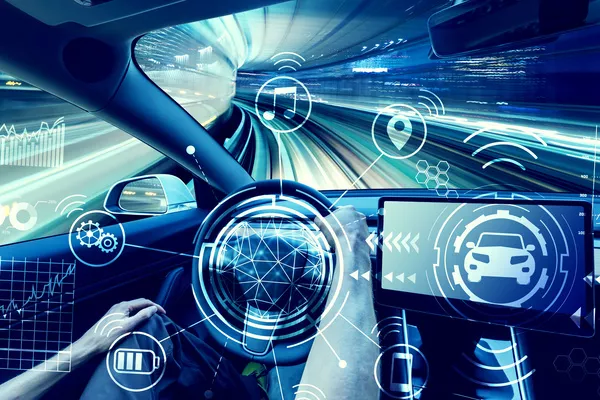
Advanced driver assistance systems are features and systems that give the driver important info
>>> Related: Top 6 advanced safety features found in cars today
There are advanced driver systems that were invented a long time ago. Even though a lot of time has passed, these systems have proven themselves worthy of being in every vehicle in the world. Just take GPS navigation for example. It is one of the most common in-car OEM infotainment systems after it was introduced in the 1990s.
Big, crumply maps are definitely obsolete and you’ll rarely see anyone use one. But there are other advanced driver assistance systems that aren’t as successful with the public as GPS navigation systems.
Some may loiter for some time and then just vanish from the manufacturer’s design. But regardless of which ADAS will stay or which will go, here are some that are worth paying attention to.
Adaptive cruise control
The first advanced driver assistance tech on our list is something you may appreciate. If you are always on the highway or live in a city, adaptive cruise control is for you. The less advanced version of this ADAS is the manual cruise control or more popular as simply, cruise control.
So, if you’re familiar with that feature and love it, trust that you will also fall in love with its more contemporary cousin. Although, it will definitely take some getting used to.
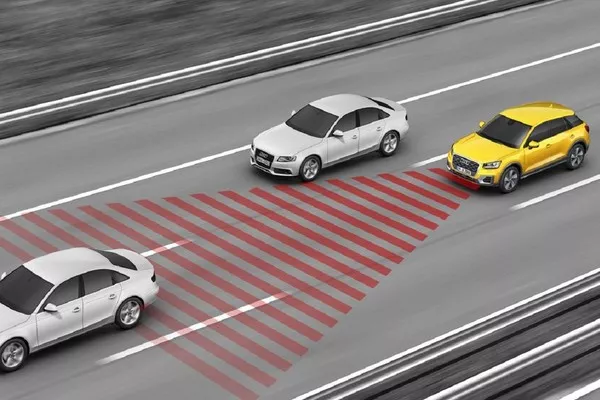
If you are always on the highway or live in a city, adaptive cruise control is for you
>>> Related: Adaptive cruise control - 4 basic things you need to know
This system is capable of slowing down or speeding up your vehicle in response to the vehicle at the front. It uses multiple sensors, cameras, and even radars to make the function possible.
A lot of these systems shut off once the vehicle reaches a particular speed threshold. While there are also more advanced versions where it can stop the vehicle if the one at your front also stopped. It can then restart the car and keep it after the vehicle at the front is at a distance.
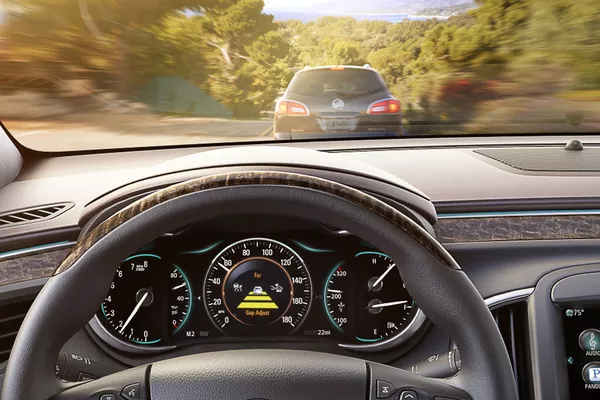
ACC system is capable of slowing down or speeding up your vehicle in response to the vehicle at the front
Adaptive light control
This particular system is worth having for those who like to drive at night. Its aim is to let drivers see further and better even in the darkest hour.
The tech is made possible by the swiveling and rotating motions that are created by the headlights. This lets the system illuminate the path better while also making you more visible to oncoming traffic.

Adaptive light control is worth having for those who like to drive at night
>>> Related: Futuristic auto repair technologies and what you need to know about them
Automatic braking
This is one of the many ADAS that are intended to stop front collisions. It’s mainly a pre-crash tech that can reduce the severity (if not stop) of accidents.
If something ever happened in front of your car without too much reaction time, your car’s sensors might be able to detect it. IF it has this feature, it will automatically stop the vehicle.
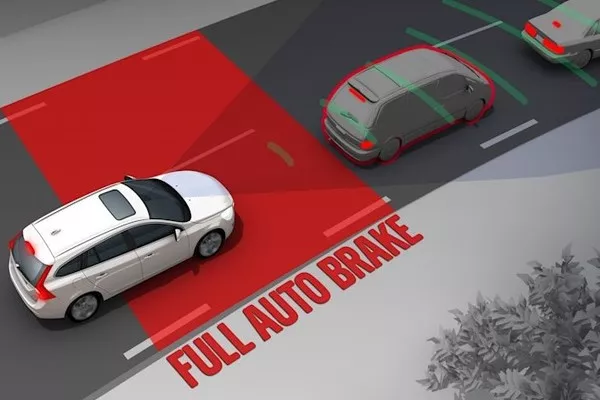
Automatic braking is one of the many ADAS that are intended to stop front collisions
>>> Related: Auto Emergency Braking or AEB is what you need right now!
Automatic Parking
The way automatic parking works can vary from one OEM company to another. But as a general assumption, a lot of these are mainly designed to help people parallel park. More advanced systems are able to park the vehicle with minimum to no human intervention at all.
Other less advanced systems, on the other hand, are competent enough to provide instructions to the driver while parking.
It will tell you how much to turn the steering wheel and when to hit on the brakes. If you have a lot of trouble parking, make sure your next vehicle has an automatic parking feature.
Blindspot detection
Gone are the days when you have to look at two mirrors whenever you look at the side view. The blindspot mirror that everyone always hated now has a better, more techy upgrade.
The latest blind spot detection technology in the market uses the hidden sensors built into your car to spot if there are any vehicles in your blind spots.
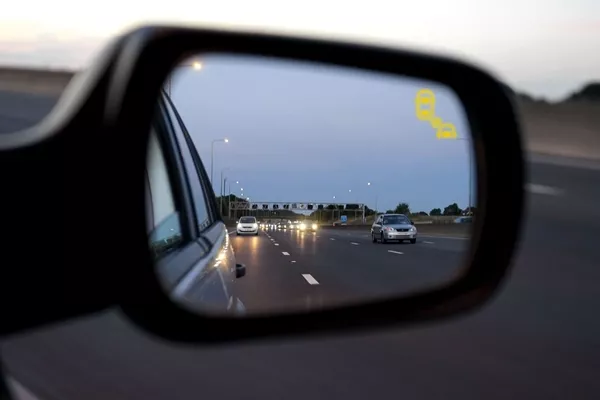
The blindspot mirror that everyone always hated now has a better, more techy upgrade
The warning you’ll receive will depend on the system that’s installed in your vehicle. Most blind spot detection systems will give a visual warning on the side view mirror where your attention is required. There are also some that will give you an audio warning.
>>> Related:
- Blind-spot detection and warning system: Better to know!
- What is a blind spot in driving & How to remove blind spots on your car
Collision avoidance systems
This last system on our list uses a complex number of sensors and cameras. The goal of this particular ADAS is pretty much self-explanatory. This simply prevents your vehicle from colliding with other vehicles on the road.
Whether it’s another vehicle, a pedestrian, an animal or debris, your Collision Avoidance System should be able to detect it. If it detects any possible obstruction, the system will send some kind of warning to the driver.
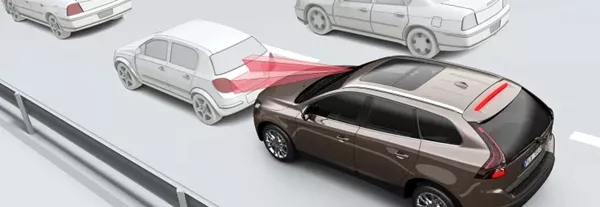
Whether it’s vehicles, a pedestrian ... your Collision Avoidance System should be able to detect it
>>> Related: What do you know about car's automatic collision notification (ACN)?
There are also edgier systems that can take preventive actions in response to the hazard. But this depends entirely on how advanced your collision avoidance system is. Some advanced systems can apply pressure to the brakes or tense up the seat belts.
Recent posts
- Unveil the myths behind Mercedes-Benz User Experience System Nov 08, 2022
- Things you might not know about car's Intellilink infotainment system Feb 10, 2020
- Kia UVO infotainment system - Things you have never thought of Nov 25, 2020
- Safe driving: Make sure you know about Smart Airbag Systems Dec 02, 2019
- Top 5 advanced car gadgets to prevent in-car heat stroke for children Nov 08, 2022












